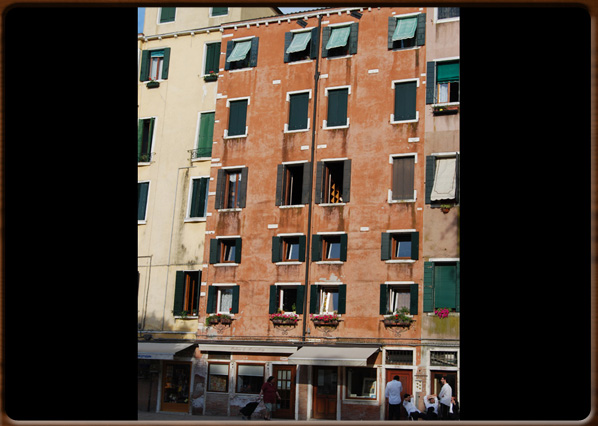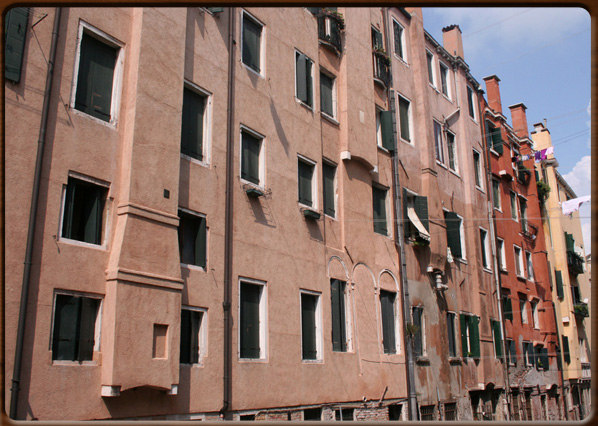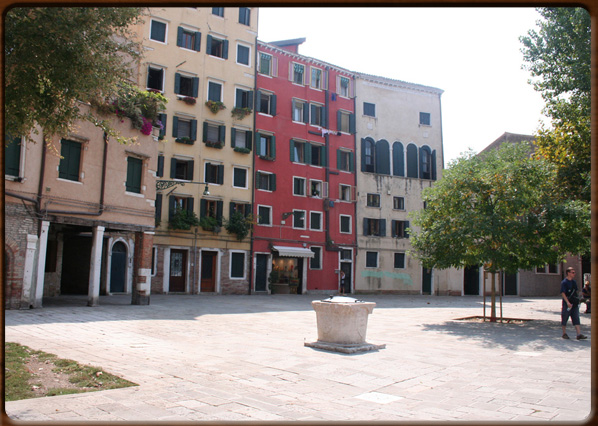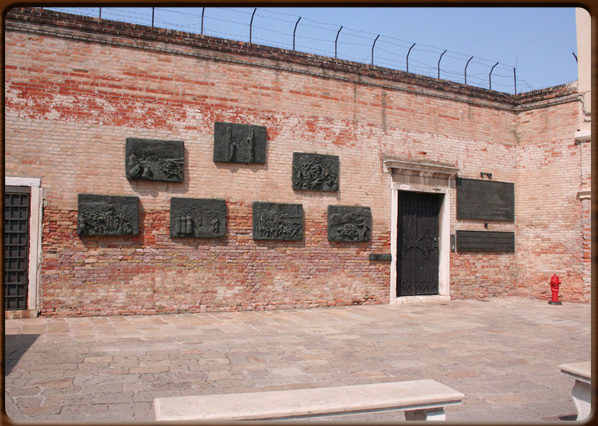
Buildings in the Ghetto.

Façade of a building in the 'ghetto'

Campo of the Ghetto Nuovo (New Ghetto).

Holocaust monument.




No video
The first Jewish settlements in the Venetian lagoon go back to the 12th Century, although their presence is only documented since the mid-1300s when the Jews started visiting Venice assiduously, attracted by the growing importance of the city in the trade routes between the East and the West.
The afflux of the Ashkenazi, Marrani and Sephardic in Venice led to a considerable development in the Jewish community in Venice, to the point that in the late 1300s the city granted them the use of the first plot of land for the Jewish cemetery, close to San Nicolò a Lido.
The Jewish presence in Venice has always been ruled by the so-called “Condotte” until the 1500s. The Jewish community grew and became organised, enjoying a climate of relative tolerance. The only case of persecution (burning at the stake) took place in March 1480 due to the killing of a Christian child in the town of Portobuffolè. The three Jews were later found to be innocent and rehabilitated.
On 29th March 1516 in accordance with the agreements of the League of Cambrai, the Senate ordered that all Jews should live in the Ghetto Novo, the area of the city with the old copper foundries. Strict rules were then applied to the Jewish population in exchange for their freedom of religion, protection against external aggression and the opportunity to handle three pawnshops, called the Red, the Yellow and the Green, applying rates set by the Serenissima.
The Ghetto was surrounded by high walls, closed each night by gates and patrolled by guards to prevent inhabitants from slipping out or criminals from entering it at night. This prohibition, however, did not include certain categories, such as doctors, musicians, singers, bankers and teachers of various disciplines whose presence was required out of the ghetto. Non-Jews were not permitted to live in the Ghetto.
While the Jews of German origin were generally money-lenders, those belonging to the levantina (Levantine) and ponentina (Sephardic) communities traded in wheat, sugar, oils, colonial goods and fabrics, mainly dealing through the towns of Corfu, Alexandria, Leghorn (Livorno) and other Mediterranean ports.
There were also sellers of “kosher” meat and the “erbarol” (vendors of fruit and vegetables).
The Jewish community prospered and expanded and so the buildings in the Ghetto were extended upwards, often to considerable heights (even seven floors high, unknown elsewhere in Venice).
However, there was need for more land and so the Ghetto Vecchio was born in 1541 and the Ghetto Novissimo in 1663 in adjacent areas of the city.
Almost all the ground floor space in Ghetto Nuovo was used for trade, shops or shared use.
The buildings inside the Ghetto are still of great architectural interest.
Until the mid 17th Century, the Jews in Venice were a stable community.
However, economic and social conditions in the city changed dramatically after a serious plague spread through Venice in 1630. This was especially felt by the Jewish merchants, who had until then always enjoyed a favourable international status and good relationships with the Turks.
Hence began a long and difficult period of crisis for their finances and businesses.
In 1645 Venice declared war against the Turks and hostilities continued for 25 years, thus blocking access to many Mediterranean routes.
Jewish merchants were forced to load their cargo in Livorno or Ancona using English ships sailing to the East.The rapprochement between Venice and Rome also led to a change in the Venetians’ attitude towards the Jews. Meanwhile, there were changes within the Jewish community as the Sephardic Jews of Hispanic origin took over and continued to enjoy a certain prosperity through the 1700s.
The early years of the 19th Century saw the introduction of the Napoleonic laws, including liberty and equality of civil rights: the richest Jews started to leave the Ghetto and a group of professional Jews became a part of city life. By the end of the 1800s, Jews had become Venetian citizens deeply integrated in the life of the city.
In 1797, after the fall of the Serenissima, Napoleon decreed the end of segregation and equal status for Jews as any other citizen: this became law with the annexation of Venice to the Kingdom of Italy.
1938 was the year the Fascist racial laws were passed. As a result, all Jews were stripped of their civil rights, thus marking the beginning of Nazi-Fascist persecution that eventually led to the deportation of 204 Venetians Jews, only 8 of whom finally returned from the concentration camps.
What was once Europe’s first ghetto is today a lively popular district of the city with many buildings of great interest, five synagogues and a museum.
1300 - 1400 - - rev. 0.1.7